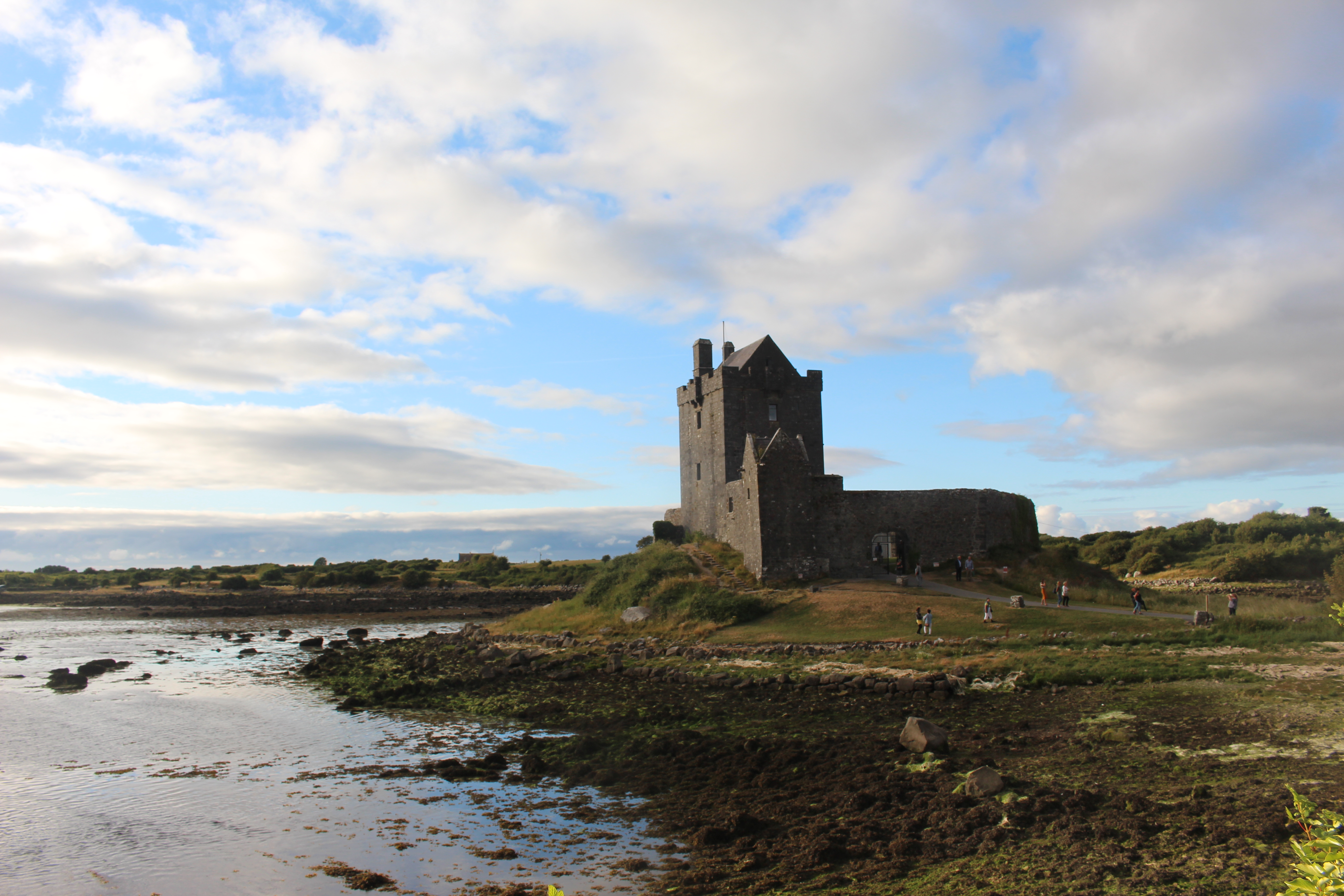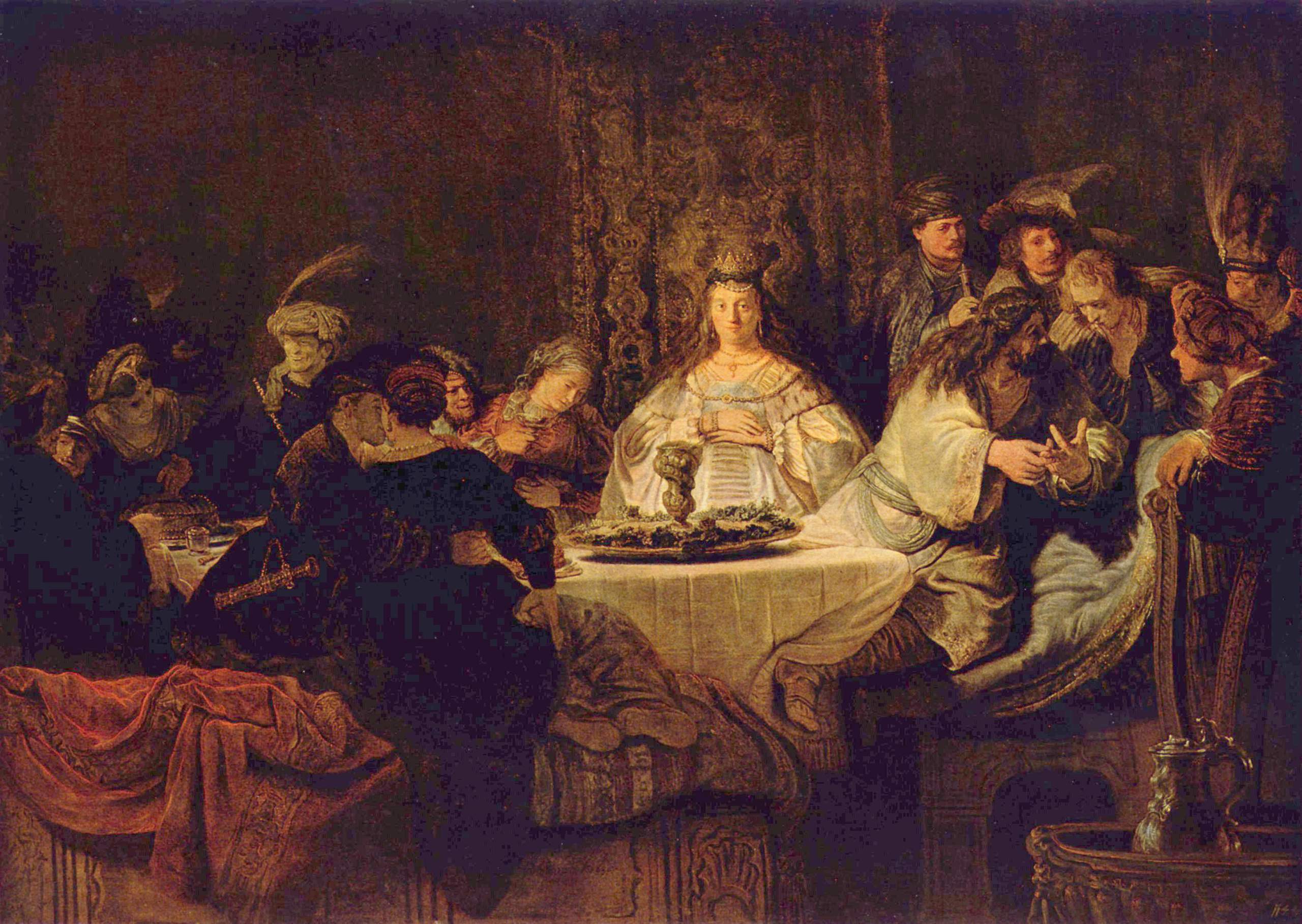|
Tromdámh Guaire
''Tromdámh Guaire'' (also known as ''Imtheacht na Tromdhaimhe'', ''Imthecht na Tromdaime'') is an Irish piece of prose satire about the relationship between the patron and poet and the abuse of privilege. Although the text itself is difficult to date, it is believed to have been composed no earlier than 1300. The only surviving copy of this text is found in the manuscript ''Leabhar Mhic Cárthaigh Riabhaigh'' or the ''Book of Lismore'' which itself dates to the fifteenth century. The story is set in seventh-century Ireland and is a literary showcase and parody of the practice of satire that was common among professional poets at the time. ''Tromdámh Guaire'' takes on a humorous look at the Bardic Order which a twelfth-century audience would have been aware of in order to "fully appreciate the biting sarcasm and satire contained in the narrative". This retrospective view does not give us an insight into seventh century Ireland, rather the twelfth-century perceptions of seventh ... [...More Info...] [...Related Items...] OR: [Wikipedia] [Google] [Baidu] |
Satire
Satire is a genre of the visual, literary, and performing arts, usually in the form of fiction and less frequently non-fiction, in which vices, follies, abuses, and shortcomings are held up to ridicule, often with the intent of shaming or exposing the perceived flaws of individuals, corporations, government, or society itself into improvement. Although satire is usually meant to be humorous, its greater purpose is often constructive social criticism, using wit to draw attention to both particular and wider issues in society. A feature of satire is strong irony or sarcasm —"in satire, irony is militant", according to literary critic Northrop Frye— but parody, burlesque, exaggeration, juxtaposition, comparison, analogy, and double entendre are all frequently used in satirical speech and writing. This "militant" irony or sarcasm often professes to approve of (or at least accept as natural) the very things the satirist wishes to question. Satire is found in many a ... [...More Info...] [...Related Items...] OR: [Wikipedia] [Google] [Baidu] |
Book Of Lismore
The Book of Lismore, also known as the Book of Mac Carthaigh Riabhach, is a late fifteenth-century Gaelic manuscript that was created at Kilbrittain in County Cork, Ireland, for Fínghean Mac Carthaigh, Lord of Carbery (1478–1505). Defective at beginning and end, 198 leaves survive today, containing a miscellany of religious and secular texts written entirely in Irish. The main scribe of the manuscript did not sign his name. A second scribe, who wrote eleven leaves, signed himself Aonghus Ó Callanáin, and was probably a member of a well-known family of medical scholars from West Cork. Other relief scribes contribute short stints throughout the book. The book also contains a reference (f. 158v) to a second manuscript, a ''duanaire'' or anthology of poetry dedicated to Mac Carthaigh, but this manuscript is now lost. Contents While poetry is well represented throughout the manuscript, the dominant form is prose, dating linguistically from the high through late Middle Ages. ... [...More Info...] [...Related Items...] OR: [Wikipedia] [Google] [Baidu] |
Irish Bardic Poetry
Bardic poetry is the writings produced by a class of poets trained in the bardic schools of Ireland and the Gaelic parts of Scotland, as they existed down to about the middle of the 17th century or, in Scotland, the early 18th century. Most of the texts preserved are in Middle Irish or in early Modern Irish, however, even though the manuscripts were very plentiful, very few have been published. It is considered a period of great literary stability due to the formalised literary language that changed very little. Background According to the Uraicecht Becc in Old Irish Law, bards and '' filid'' were distinct groups: ''filid'' involved themselves with law, language, lore and court poetry, whereas bards were versifiers. However, in time, these terms came to be used interchangeably. With the arrival of Christianity, the poets were still given a high rank in society, equal to that of a bishop, but even the highest-ranked poet, the ''ollamh'' was now only 'the shadow of a high-ranki ... [...More Info...] [...Related Items...] OR: [Wikipedia] [Google] [Baidu] |
Dallán Forgaill
Eochaid mac Colla ( 560 – 640), better known as Saint Dallán or Dallán Forgaill ( sga, Dallán Forchella; la, Dallanus Forcellius; Primitive Irish: ''Dallagnas Worgēllas''), was an early Christian Irish poet and saint known as the writer of the "''Amra Coluim Chille''" ("Elegy of Saint Columba") and, traditionally, "''Rop Tú Mo Baile''" ("Be Thou My Vision"). Personal history Saint Dallan's given name was Eochaidh ( sga, Eochaid); his father was Colla, a descendant of the legendary High King Colla Uais, and his mother was Forgall (Old Irish: ''Forchella''). His nickname, ''Dallán'' ("little blind one"), was earned after he lost his sight, reputedly as a result of studying intensively. He was born in Maigen (now Ballyconnell), at the eastern edge of the territory of the Masraige of Magh Slécht in the north-west of modern County Cavan. He was not a member of the Masraige but belonged to a branch of the Airgíalla called the Fir Lurg, who were in the process of spreadin ... [...More Info...] [...Related Items...] OR: [Wikipedia] [Google] [Baidu] |
Senchán Torpéist
Senchán Torpéist (c. 560–649 AD) was a Gaelic-Irish poet. Background Seanchan Torpest was the Chief Poet of Connacht c.640 AD when he succeeded Dallán Forgaill as Chief Ollam of Ireland. He died in c.649 AD. His father was Cuairfheartaigh from the Araidh sept on the northern Tipperary-Limerick border. According to suggestion of James Carney, Senchán recorded his own pedigree in a genealogical work on the Concangab Már which he composed about 630. It states: ''Senchán, son of Úarchride, son of Adóer, of the Araid''. Senchan's mother's name was Dediva (also called Editua or Dedi or Deidi or Deighe or Deidiu or Deaga or Mediva), daughter of Tren, son of Dubhthach moccu Lughair, who was also a previous Chief Ollam of Ireland and royal poet of King Lóegaire mac Néill. Dediva's other children were Saint Senan of Laraghabrine, son of Fintan, Saint Diarmaid the Just, son of Lugna, Saint Felim of Kilmore son of Carill, Saint Daigh of Inniskeen son of Carill, Saint Femia, dau ... [...More Info...] [...Related Items...] OR: [Wikipedia] [Google] [Baidu] |
Guaire Aidne Mac Colmáin
Guaire Aidne mac Colmáin (died 663) was a king of Connacht. A member of the Ui Fiachrach Aidhne and son of king Colmán mac Cobthaig (died 622). Guaire ruled at the height of Ui Fiachrach Aidne power in south Connacht. Early reign Guaire appears to have succeeded his father as king of the Ui Fiachrach Aidhne in 622. In 629 was fought the Battle of Carn Feradaig (Carhernarry, County Limerick), where he suffered a defeat at the hands of the Munster king Faílbe Flann mac Áedo Duib (died 639). His ally Conall mac Máele Dúib of the Ui Maine was slain. According to Keating, Guaire's reason for this campaign was to recover the Thomond region from Munster. Prof. Byrne believes that this defeat marked the true expansion of the Déisi Tuisceart into Thomond. He also states that this defeat may have paved the way for Rogallach mac Uatach (died 649) in acquiring the overlordship of Connacht. Carn Conaill The next event recorded of Guaire in the annals is the Battle of Carn Conaill ... [...More Info...] [...Related Items...] OR: [Wikipedia] [Google] [Baidu] |
Táin Bó Cúailnge
(Modern ; "the driving-off of the cows of Cooley"), commonly known as ''The Táin'' or less commonly as ''The Cattle Raid of Cooley'', is an epic from Irish mythology. It is often called "The Irish Iliad", although like most other early Irish literature, the ''Táin'' is written in prosimetrum, i.e. prose with periodic additions of verse composed by the characters. The ''Táin'' tells of a war against Ulster by Queen Medb of Connacht and her husband King Ailill, who intend to steal the stud bull Donn Cuailnge. Due to a curse upon the king and warriors of Ulster, the invaders are opposed only by the young demigod, Cú Chulainn. The ''Táin'' is traditionally set in the 1st century in a pagan heroic age, and is the central text of a group of tales known as the Ulster Cycle. It survives in three written versions or "recensions" in manuscripts of the 12th century and later, the first a compilation largely written in Old Irish, the second a more consistent work in Middle Irish, ... [...More Info...] [...Related Items...] OR: [Wikipedia] [Google] [Baidu] |
Fergus Mac Róich
Fergus mac Róich (literally "manliness, son of great stallion") is a character in the Ulster Cycle of Irish mythology. Formerly the king of Ulster, he is tricked out of the kingship and betrayed by Conchobar mac Nessa, becomes the ally and lover of Conchobar's enemy, queen Medb of Connacht, and joins her expedition against Ulster in the ''Táin Bó Cúailnge''. Fergus is described as being of huge size and sexual potency.Whitley Stokes (ed. & trans.)"The Tidings of Conchobar son of Ness" ''Ériu'' vol. 2, 1908 This leads him into many a precarious situation as in the story of the ''Táin Bó Flidhais''. King of Ulster Fergus becomes king of Ulster after his predecessor, Eochaid Sálbuide, is killed, along with the High King Fachtna Fáthach, by Eochu Feidlech in the Battle of Leitir Ruad. While king, he desires Eochaid Sálbuide's daughter Ness, but she will only consent to marry him if he allows her son Conchobar to be king for a year, so his sons will be the sons of a king. T ... [...More Info...] [...Related Items...] OR: [Wikipedia] [Google] [Baidu] |
Riddle
A riddle is a statement, question or phrase having a double or veiled meaning, put forth as a puzzle to be solved. Riddles are of two types: ''enigmas'', which are problems generally expressed in metaphorical or allegorical language that require ingenuity and careful thinking for their solution, and ''conundra'', which are questions relying for their effects on punning in either the question or the answer. Archer Taylor says that "we can probably say that riddling is a universal art" and cites riddles from hundreds of different cultures including Finnish, Hungarian, American Indian, Chinese, Russian, Dutch and Filipino sources amongst many others. Many riddles and riddle-themes are internationally widespread. In the assessment of Elli Köngäs-Maranda (originally writing about Malaitian riddles, but with an insight that has been taken up more widely), whereas myths serve to encode and establish social norms, "riddles make a point of playing with conceptual boundaries and cross ... [...More Info...] [...Related Items...] OR: [Wikipedia] [Google] [Baidu] |





